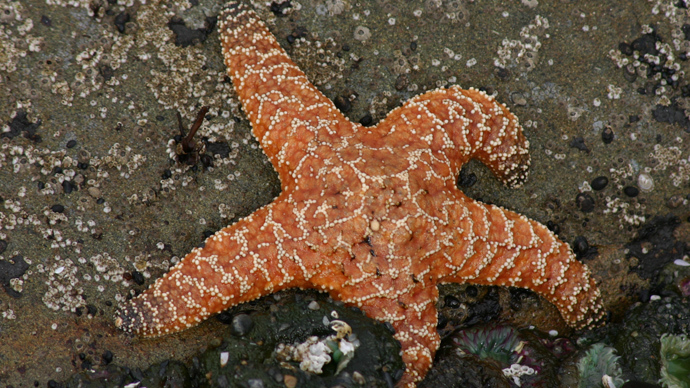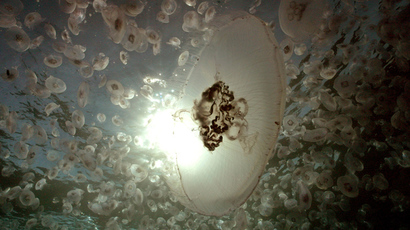Star wasting syndrome: Deadly disease kills myriad starfish across US west coast

A "spooky disease" causing starfish to lose their limbs and die in a matter of days in record numbers is raging along the US west coast. Scientists are struggling to determine the reach and source of the deadly syndrome known as ‘star wasting disease’.
Since June, wasting sea stars have been spotted in dozens of
coastal sites ranging from southeast Alaska to California. In one
surveyed tide pool in Santa Cruz, 90 to 95 percent of starfish
were killed by the disease.
Sea star wasting syndrome usually starts with white lesions on
the arms of the starfish that spread inward, causing the animal
to dissolve in less than a week. The disease was previously
linked to a rise in seawater temperatures, which is not the case
this time.
"It's pretty spooky because we don't have any obvious culprit
for the root cause even though we know it's likely caused by a
pathogen," chair of the Department of Ecology and
Evolutionary Biology at the University of California at Santa
Cruz's Long Marine Lab, Pete Raimondi, told Reuters.
Although starfish have suffered from the deadly syndrome on and
off for decades, the disease never hit such record-breaking
numbers of sea creatures. According to Raimondi, the mortality
rates have been higher than ever before.
"Their tissue just melts away," a biologist and researcher with
the Multi-Agency Rocky Intertidal Network that monitor tidal
wildlife and environment along the West Coast, Melissa Miner,
told Reuters.
The syndrome primarily affects the mussel-eating Pisaster
ochraceus, a large purple and orange starfish which is considered
an important indicator for the health of the intertidal zone.
Marine biologists from the Long Marine Lab say, however, that at
least 10 species of sea stars have also shown signs of the
disease since the outbreak of the disease in June.
Meanwhile, if the numbers of Pisaster ochraceus, which feeds on
mussels, begin to decrease, mussels could crowd the ocean,
disrupting biodiversity.
It’s hard to estimate how many starfish on the West Coast have
already been killed by the fatal disease or could be in the
future.
"We're way at the onset now, so we just don't know how bad
it's going to get," Raimondi said.














